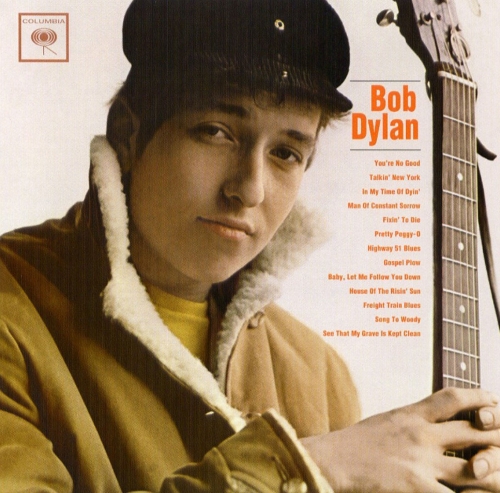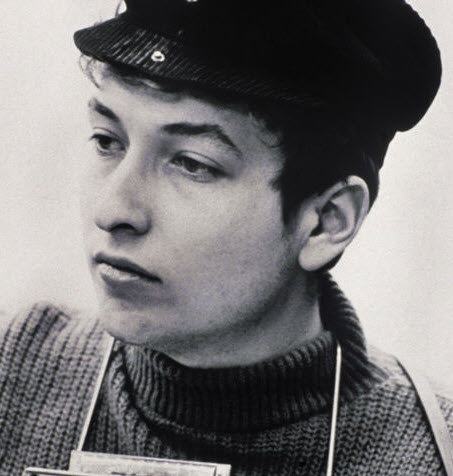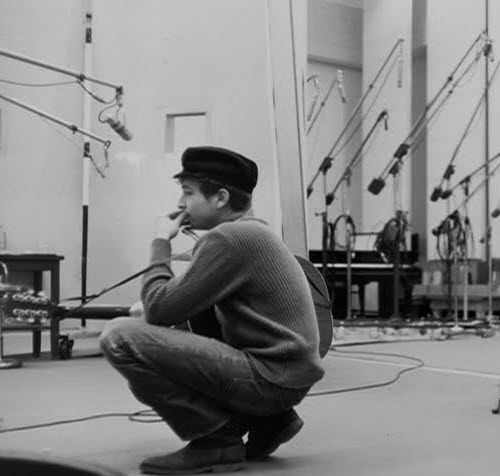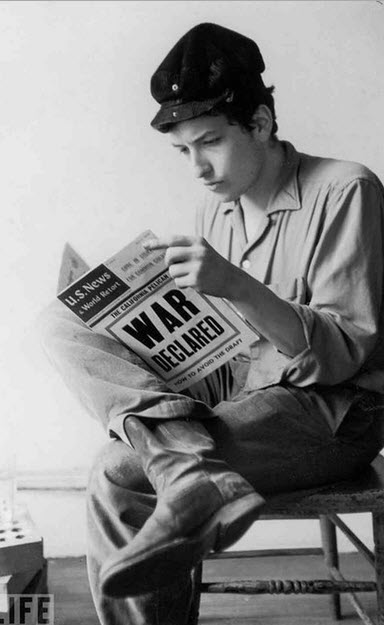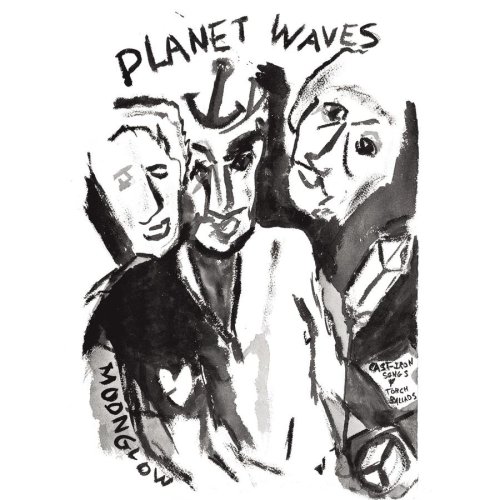..His talent takes many forms. He is one of the most compelling white blues singers ever recorded. He is a songwriter of exceptional facility and cleverness. He is an uncommonly skillful guitar player and harmonica player.
~Stacy Williams (“Bob Dylan” LP. liner notes)Dylan’s first album can hardly be faulted. It is a brilliant debut, a performer’s tour de force,….
~Michael Gray (BD Encyclopedia)
Talkin’ New York:
Wikipedia:
| Released | March 19, 1962 |
|---|---|
| Recorded | November 20 and 22, 1961,Columbia Recording Studio, New York City, New York, United States |
| Genre | Folk |
| Length | 36:54 |
| Label | Columbia |
| Producer | John H. Hammond |
Bob Dylan is the debut album by American singer-songwriter Bob Dylan, released in March 1962 by Columbia Records. Produced by Columbia’s legendary talent scout John H. Hammond, who signed Dylan to the label, the album features folk standards, plus two original compositions, “Talkin’ New York” and “Song to Woody”.
Man of Constant Sorrow:
Recording sessions
The album was ultimately recorded in three short afternoon sessions on November 20 and 22 (1961). Hammond later joked that Columbia spent “about $402” to record it, and the figure has entered the Dylan legend as its actual cost. Despite the low cost and short amount of time, Dylan was still difficult to record, according to Hammond. “Bobby popped every p, hissed every s, and habitually wandered off mike,” recalls Hammond. “Even more frustrating, he refused to learn from his mistakes. It occurred to me at the time that I’d never worked with anyone so undisciplined before.”
Seventeen songs were recorded, and five of the album’s chosen tracks were actually cut in single takes (“Baby Let Me Follow You Down,” “In My Time of Dyin’,” “Gospel Plow,” “Highway 51 Blues,” and “Freight Train Blues”) while the master take of “Song to Woody” was recorded after one false start. The album’s four outtakes were also cut in single takes. During the sessions, Dylan refused requests to do second takes. “I said no. I can’t see myself singing the same song twice in a row. That’s terrible.”
The album cover features a reversed photo of Dylan holding his acoustic guitar. It is unknown as to why the photo was flipped.
In My Time of Dyin:
In less than one year in New York, Bob Dylan has thrown the folk crowd into an uproar. Ardent fans have been shouting his praises. Devotees have found in him the image of a singing rebel, a musical Chaplin tramp, a young Woody Guthrie, or a composite of some of the best country blues singers.
~Stacy Williams (“Bob Dylan” LP. liner notes)
Track Listing:
Side one
- “You’re No Good” – Jesse Fuller 1:40
- “Talkin’ New York” – Bob Dylan 3:20
- “In My Time of Dyin'” – trad. arr. Dylan 2:40
- “Man of Constant Sorrow” – trad. arr. Dylan 3:10
- “Fixin’ to Die” – Bukka White 2:22
- “Pretty Peggy-O” – trad. arr. Dylan 3:23
- “Highway 51” – Curtis Jones 2:52
Side two
- “Gospel Plow” – trad. arr. Dylan 1:47
- “Baby, Let Me Follow You Down” – trad. arr. Eric von Schmidt 2:37
- “House of the Risin’ Sun” – trad. arr. Dave Van Ronk 5:20
- “Freight Train Blues” – trad., Roy Acuff 2:18
- “Song to Woody” – Bob Dylan 2:42
- “See That My Grave Is Kept Clean” – Blind Lemon Jefferson 2:43
Personnel:
- Bob Dylan – vocals, acoustic guitar, harmonica
Technical personnel
- John H. Hammond – production
Baby, Let Me Follow You Down:
The Songs:
By the time sessions were held for his debut album, Dylan was absorbing an enormous amount of folk material from sitting and listening to contemporaries performing in New York’s clubs and coffeehouses. Many of these individuals were also close friends who performed with Dylan, often inviting him to their apartments where they would introduce him to more folk songs. At the same time, Dylan was borrowing and listening to a large number of folk, blues, and country records, many of which were hard to find at the time. Dylan revealed in an interview in the documentary No Direction Home that he needed to hear a song only once or twice to learn it.
The final album sequence of Bob Dylan features only two original compositions; the other eleven tracks are folk standards and traditional songs. Few of these were staples of his club/coffeehouse repertoire. Only two of the covers and both originals were in his club set in September 1961.
Dylan stated in a 2000 interview that he was hesitant to reveal too much of himself at first.
See That My Grave is Kept Clean:
Aftermath
Bob Dylan did not receive much acclaim until years later. “These debut songs are essayed with differing degrees of conviction,” writes music critic Tim Riley, “[but] even when his reach exceeds his grasp, he never sounds like he knows he’s in over his head, or gushily patronizing… Like Elvis Presley, what Dylan can sing, he quickly masters; what he can’t, he twists to his own devices. And as with the Presley Sun sessions, the voice that leaps from Dylan’s first album is its most striking feature, a determined, iconoclastic baying that chews up influences, and spits out the odd mixed signal without half trying.”
However, at the time of its release, Bob Dylan received little notice, and both Hammond and Dylan were soon dismissive of the first album’s results.
Bob Dylan’s first album is a lot like the debut albums by the Beatles and the Rolling Stones — a sterling effort, outclassing most, if not all, of what came before it in the genre, but similarly eclipsed by the artist’s own subsequent efforts. The difference was that not very many people heard Bob Dylan on its original release (originals on the early-’60s Columbia label are choice collectibles) because it was recorded with a much smaller audience and musical arena in mind.
~Bruce Eder (allmusic.com)
Spotify:
Check out -> Bob Dylan albums @ JV
Other Mar-19:
Continue reading Today: Bob Dylan released Bob Dylan in 1962 – 51 years ago

